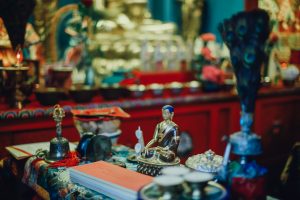When Australian Prime Minister Scott Morrison visits India in January, he will have a number of important issues to pursue with his counterpart, Narendra Modi. While bilateral defense cooperation between the two countries has begun to flourish in recent years, Australia’s desire to participate in India-led multilateral security exercises (like Exercise Malabar) continue to be rebuffed by New Delhi. Finding an avenue for Australia’s participation will be a part of Morrison’s agenda, as will be the hope to restart negotiations on the stalled free-trade agreement.
These issues aren’t necessarily due to a lack of trust and goodwill between New Delhi and Canberra. Australia’s exclusion from Malabar seems to be rooted in India’s own strategic calculations, while the stalled free-trade agreement is due to the inherent suspicion toward trade within both the governing Bharatiya Janata Party (BJP) and the Indian state more broadly. However, expanding goodwill and consolidating trust are never a bad thing, and so when Morrison arrives in India he will be returning several Indian artifacts that have been part of the collection at the National Gallery of Australia (NGA).
The items that will be returned to India are a pair of 15th-century door guardians (dvarapala) from Tamil Nadu, and a 6th to 8th-century serpent king (Nagaraja) believed to be from either from Rajasthan or Madhya Pradesh. The pieces were purchased by the NGA from disgraced art dealer Subhash Kapoor, who is believed to have stolen these items — and many more — from sites in India, where he sold them on to some of the world’s leading galleries. In 2011 Kapoor was arrested in Germany and subsequently extradited India the following year. He is currently imprisoned and awaiting trial. In July this year a New York court charged Kapoor with 86 felony counts and has accused him of trafficking $145 million worth of ill-gotten antiquities since 1974.
After Kapoor’s arrest and extradition to India it became apparent that a significant portion of the NGA’s Indian collection had been sourced from Kapoor’s Manhattan dealership. In its eagerness to enhance its collection of artifacts from the subcontinent, the NGA failed to do due diligence on both Kapoor and the history of ownership of the items it purchased. India’s Antiquities and Art Treasures Act of 1972 states that all items of antiquity are owned by the Indian government and only with exhibition licences can they be displayed overseas. Kapoor is alleged to have created false documents that attempted to demonstrate ownership of these items prior to 1972.
Subsequently, the gallery conducted a review of the collection to trace the chain of ownership of the items in its possession and identify which pieces were obtained by deceptive means, and a review of its due diligence processes. The review identified 22 items held by the gallery that had “insufficient or questionable” records of ownership (14 of these were purchased from Kapoor). This review also began the process of identifying works that could be returned to India.
In 2014 then-Prime Minister Tony Abbott returned two statues of the Hindu god Shiva to India, one that had been part of the NGA’s collection, and another from the Art Gallery of New South Wales. Both purchased from Kapoor. In 2016 two more pieces — a 900-year-old stone statue of the Goddess Pratyangira and a third-century rock carving of Worshippers of the Buddha — were returned to the Indian Minister of Culture while on a visit to Australia.
While Morrison’s forthcoming return of a number of antiquities will be welcomed by the Indian government, it will also highlight that the NGA still holds a number of items purchased from Kapoor. In 1986 Australia passed legislation making antiquities liable to forfeiture if foreign countries establish they had been illegally removed. This indicates that if Kapoor is found guilty — both in India and in New York — the Australian government would be compelled to remove the entire collection of items that the NGA had purchased from the dealer.
Given the recent charges laid against Kapoor in New York, it is a smart move for the Australian government to get out ahead of the issue and begin the repatriation process. With the goodwill this will generate there is the potential for the rest of the collection to quickly follow. This could be particularly important as Canberra is very keen to forge much closer ties with New Delhi, and significantly enhance the security cooperation and economic interaction between the two countries. The ability to be seen in New Delhi as a good faith and reliable partner is seen as a necessity in Canberra’s strategic thinking. Morrison’s forthcoming visit to India will accordingly be ambitious in its agenda, and will therefore require an artful approach.

































